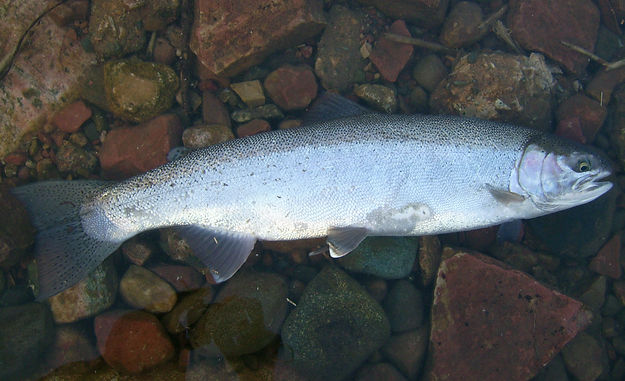
Steelhead
LOCATION
BODIES OF WATER
Steelhead, prized for their acrobatic leaps and powerful runs, can be found in various bodies of water across the North/Great Lakes region of the United States. Anglers seek out steelhead for their thrilling fishing experiences and the challenge they present. While the following bodies of water are popular for steelhead fishing in this region, it's important to note that there are numerous other locations where anglers can explore and find themselves hooked into these elusive fish:
Michigan: Manistee River, Muskegon River, St. Joseph River.
Minnesota: North Shore of Lake Superior, Brule River, Cascade River.
North Dakota: Red River, Sheyenne River, Missouri River.
South Dakota: Spearfish Creek, Rapid Creek, Spring Creek.
Wisconsin: Bois Brule River, Root River, Milwaukee River.
STRUCTURE/HABITAT
Steelhead thrive in cold, clear rivers and streams that flow into the Great Lakes. They prefer habitats with gravel or rocky bottoms, deep pools, and runs with moderate current. Look for steelhead near riffles, submerged structures, and areas with overhead cover. They are often found in deeper holes and areas with undercut banks. Pay attention to water temperature and flow, as steelhead are sensitive to changes and prefer cooler waters.
PATTERNS
SPRING
During the spring months, steelhead migrate from the Great Lakes into rivers for spawning. They become more active and aggressive, actively feeding on their journey. Focus your fishing efforts near river mouths, gravel beds, and deeper runs. Use swinging flies, nymphs, or spawn sacs to entice strikes from hungry steelhead.
SUMMER
In the summer, steelhead seek cooler waters and can be found in deeper pools, runs, and near thermocline layers. They may also hold in larger rivers' cooler tributaries. Early mornings and late evenings are prime times for steelhead fishing during this season. Use a combination of swinging flies, streamers, and nymphs to target steelhead in their preferred depth range.
FALL
As fall arrives, steelhead start their annual migration back to the Great Lakes. They become more aggressive and territorial, preparing for the spawning season. Look for them in deeper pools, runs, and near gravel beds. Use egg patterns, nymphs, or streamers to mimic the eggs of spawning fish. Swing flies or dead-drift nymphs through likely holding areas to trigger strikes from steelhead.
WINTER
During the winter months, steelhead seek shelter in deeper pools and slower sections of rivers. They become less active but can still be caught. Focus your efforts near deeper pools with structure, such as submerged logs or boulders. Present your flies or baits slowly and near the bottom. Nymphs, egg patterns, or small jigs can be effective in enticing steelhead during the colder months.
Bait
Steelhead are opportunistic feeders and will strike a variety of baits and lures. Effective bait options for steelhead fishing include spawn sacs, nightcrawlers, minnows, or artificial baits such as beads or soft plastic jigs. When using bait, rig them on light tackle with appropriate hooks and weights for natural presentations. For lure fishing, try bright colors and different retrieval techniques to attract the attention of steelhead.
